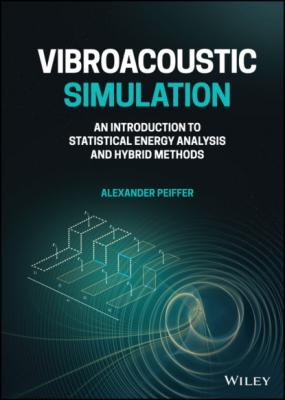Vibroacoustic Simulation. Alexander Peiffer
Чтение книги онлайн.
Читать онлайн книгу Vibroacoustic Simulation - Alexander Peiffer страница 14
 denotes a time average. If the signal is harmonic with u(t)=u^cos(ω0t) then
denotes a time average. If the signal is harmonic with u(t)=u^cos(ω0t) then
1.2.3 Impedance and Response Functions
So far the frequency response of the oscillator was expressed as the relationship between displacement and force. The ratios u/Fx and D=Fx/u are called mechanical receptance and, respectively. Often used force response relationships are the mechanical impedance impedance ! mechanical (force/velocity=Fx/vx) and the mobility (velocity/force=vx/Fx). The symbols and definitions are:
Considering the solution of the damped oscillator and vx=jωu both quantities become:
The real and imaginary part have specific names resistance reactance
The meaning of this convention becomes clear when inspecting Figure 1.9. When the oscillator is excited in the mass- or stiffness-controlled regime below or above the resonance, the force introduces a reactive movement. The energy can be taken back from the system and it is called reactive. Whether the system response is mass or stiffness controlled can be identified from the slope of the impedance magnitude and the phase. In the resonance regime the system is driven at resonance and the damper dissipates energy. The resistance of the system becomes important and is thus called resistive.
Figure 1.9 Magnitude and phase of oscillator impedance. Source: Alexander Peiffer.
1.2.3.1 Power Balance
We multiply Equation (1.23) by u˙
The first and third term can be integrated
The terms in the parenthesis are kinetic and potential energy and known as constant. The expression cvu˙2 is the dissipated power, because it is the damping force times velocity.
And Fxu˙ is the introduced power, thus
So we get the power balance
that is fluctuating for harmonic motion but with a net power flow.
For harmonic motion the power introduced into the system by a force Fx(t)=Fxejωt that generates the velocity response vx(t)=vxejωt is
The first term in the bracket is constant, the second oscillating with twice the excitation frequency. The first part is called active power and the second part the reactive. All introduced energy in one half cycle comes back in the next half cycle. The time average over one period leaves only the active part